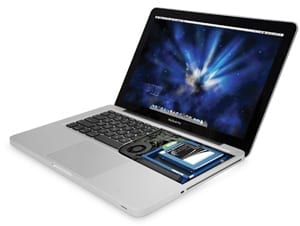 At Other World Computing, it’s our pleasure to provide you with regular tips, how-to’s, and insights so you can get the most from your technology.
At Other World Computing, it’s our pleasure to provide you with regular tips, how-to’s, and insights so you can get the most from your technology.
Unfortunately, a misconception exists that upgrading is hard or can’t be done at all. We’re here to dispel those notions by explaining how you can add a second hard drive or SSD to a MacBook, MacBook Pro, and Mac mini.
With the exception of special configurations, Mac mini, MacBook, and MacBook Pro computers have shipped with a single hard drive for the past four years. Currently, you can replace the factory drive with a new, larger hard drive up to 1.0TB. Or, you can add SSD performance with capacities up to 960GB. By watching our acclaimed how-to videos you’ll have the confidence to “DIY” it.
Want to add a second drive to a 2011-2012 Mac mini? The capability is there waiting…all you need is a drive and OWC’s custom cable and mounting kit to infuse your mini with massive potential.
MacBook and MacBook Pro models from late 2008 through the latest 2012 model owners—you can add a second hard drive or SSD by giving up your optical drive. And, if you still sometimes need that optical drive, it’s easily turned into an external!
Honestly, having the benefit of additional drive capacity and/or performance is far less complicated than you’d imagine. We don’t just say that, see for yourself!
Having a second drive adds a new level of flexibility and capability. Store more, have a built-in Time Machine volume, use Disk Utility for RAID, and more. The potential has always been there; OWC is here to help you take advantage of it with a complete package of product, service, and support.
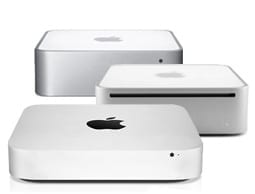
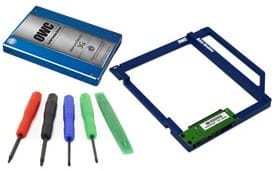

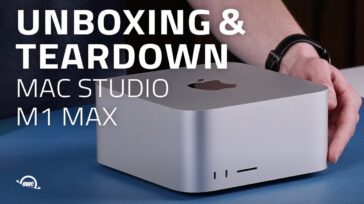
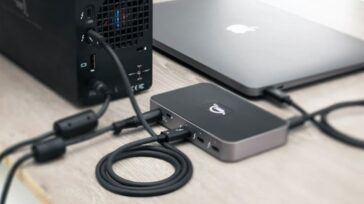



Dear Sirs
Could you please give me information on the requirements for setting up Boot Camp for Windows 8 on a MacBook Pro 17“ Model 8.3 Late 2011 with a OWC Data Doubler kit installed instead of the DVD-drive (a SSD boot disk in the main bay with Mac OS X 10.8.3 and a data HDD in the DVD-drive bay), i.e.:
1. Will it be possible to to install Windows 8 on the Boot Camp partition on the SSD in the main bay:
a. from an external USB-connected DVD-drive using a bootable Windows 8 DVD-install disc?
b. from an external USB-flash drive with a bootable (created from the bootable Windows 8 DVD-install disk using Boot Camp Assistant or the Microsoft Windows 7 USB/DVD Download tool) ?
If 1. a and 1. b is not possible:
2. Do I have to remove the HDD from the DVD-bay and re-install the internal DVD-drive into my MacBook Pro to be able to install Windows 8 on the Boot Camp partition on the SSD in the main bay using a Windows 8 bootable DVD-install disc placed in the internal DVD-drive?
3. Are there any other possible solutions for installing Windows 8 on a Boot Camp partition on my MacBook Pro with the data doubler installed instead of the internal DVD-drive?
Best regards, Baldur J. B.
unfortunately you would not be able to setup Boot Camp for Windows 8 using option #1a, #1b, and #3.
Option #2 that you outlined would be the correct procedure for setting Boot Camp for Windows 8.
I have a late 2009 Macbook running OS X 10.8.4. I bought a SSD data doubler and installed it. How do I link the two hard drives so that it looks like 1 drive and the stuff I use most often is on the SSD and the seldom used large files are left on the older HD?
Thank you,
Chris
What you’re asking about is called a Fusion drive. The instructions for setting one up can be found here:
http://blog.macsales.com/17624-os-x-10-8-3-provides-fusion-drive-setup-option-for-non-fusion-drive-equipped-macs
Alternately, you may want to set up your Mac so that the OS runs off the faster SSD drive while seamlessly keeping your data files on the original drive:
http://blog.macsales.com/13511-owc-introduces-techknowlogy-video-series
Hi!
I have just received a brand new 240 GB OWC Mercury Extreme Pro SSD with the firmware Rev. 506 (for my MacBook Pro model 8.3 late 2011 17″ runnig OS X 10.8.3).
According to the OWC home page the current firmware revision is Rev. 507. Downloading and running the firmware update the updater veryfies that an update is needed. However the updating process stops half way with the message “Sorry the firmware seems to be damaged” followed by “Unable to find compatible firmware for your drive”. I therefore contaced OWC live technical assisance and got the information that “if 506 you do not need the update. the error message is generic for the firmware update if the firmware is current – 506 – 507 is up to date”.
I am somewhat puzzled by the contradicting information I am getting from OWC concerning the current firmware revision for this OWC Mercury Extreme Pro 6GB SSD. Can you confirme that Rev. 506 is current inspite of the fact that the OWC home page states Rev. 507 to be the current Revision?
I apologize for this confusion. 5.06 and later is current. 5.07 is only required for some of the current NAND now being built with and those solutions are can not operate with 5.06. Any OWC Mercury Extreme Pro 6G, Electra 3G, Electra 6G, Aura Pro 6G SSD reporting firmware revision 5.0.6 or later is on the latest functional revision.
This information could have saved me a lot of trouble. I invested many hours in first re-installing the DVD-drive into my Mac instead of the Data Doubler (having first to take the DVD-drive out of a UBS-enclosure), repeated downloads of the unnecessary/useless firmware update, repeated burning of the firmware image to DVD’s, may failed attempts to install the unnecessary/useless update, written conversation with the live-OWC-technical assistance and finally reversing the whole hardware setup of my MacBook Pro back to the original setup.
My conclusion: I strongly recommend to OWC that the information regarding the firmware update should be made more precise on the OWC home page. This could save users from a lot of wasted effort. However I am thankful for the quick response I have received from OWC technical and customer support in this matter.
… not forgetting to mention that the SSD and the Data Doubler seem to function perfectly in my MBP, – just as I expected from OWC-products!
In the meantime I have noticed that the information on the OWC home page regarding current firmware revisions have been updated and now state that both rev. 507ABBF0 and 506ABBF0 are current for the OWC 6GB SSDs.
Thanks and we do appreciate and act on feedback – always looking to make things better and the best possible. Thanks again!
Hi,
I would appreciate if you could comment on the following drive options for my MacBook Pro 17“ late 2011 model 8.3:
Is there a significant performance benefit to be expected in using the Mercury EXTREME™ Pro 6G SSD 2.5″ series compared to the Mercury Electra™ 6G SSD 2.5″ series (placed in the main drive bay in the MBP) in connection with non professional computer use?
Is there a significant performance benefit to be expected in using the downclocked 1.0TB 2.5″ HGST Travelstar 7K1000 7200RPM SATA 2.0 3Gb/s 9.5mm Notebook Drive 32MB Cache compared to the 1.0TB 2.5″ HGST Travelstar 5K1000 5400RPM SATA 3Gb/s 9.5mm Notebook Drive 8MB Cache placed in the optical-bay of my MBP (using a OWC data doubler) in connection with non professional computer use?
Best regards, Baldur J. B.
With the SSD – the difference really depends on what you are using the system for. If you are editing photos, video to any degree (regardless of professional or not) – the Extreme Pro model does give a benefit vs. the Electra 6G model. This being said, the Electra 6G is more than fast enough for these tasks and what I’d recommend unless these photo/video functions were a large portion of your personal use. Just viewing photos there is no significant difference, as a further note.
In the case of the 1TB HD – no single hard drive today is exceeding 300MB/s data transfer rate. While SATA 3.0 does have some command set performance benefits, the difference in how the 1TB 7200RPM or 5400RPM models perform with 3Gb/s and 6Gb/s is very negligible in real world. In terms of the impact of the downclock, it’s not a factor. Now… in terms of 5400RPM vs. 7200RPM – hard drives are substantially slower than SSDs. For any application at all, there is a noticeable difference between 7200RPM and 5400RPM. That all said – if you are using the SSD in your main bay for startup and primary applications and a hard drive for more static stored data and/or backup – there isn’t a huge noticeable impact between the 7200RPM and 5400RPM 1TB drives in that kind of setup. The 7200RPM will be noticeably more responsive, but honestly not by much – certainly a sliver of difference compared to what you’ll see with either OWC SSD vs. either of them.
I hope this helps and has the information sought. Happy to elaborate further. In summary –
The Electra 6G SSD I would guess is A-Ok for the intended use and not a lot of benefit going Extreme in terms of SSD. 5400RPM or 7200RPM HDD will be fine in config where running an SSD, you may like the extra kick the 7200RPM brings when you are hitting the hdd storage side.
Thank you very much for your informative reply. One more question concerning the HDD:
It seems to me that all HDD´s with a capacity in excess of 1.0 TB offered by OWC are thicker than 9.5 mm. To my knowledge at least Toshiba is offering a 1.5TB, 2.5″ SATA HDD with the thickness of 9.5 mm, i.e. the MQ SERIES, part number: PX1830E-1HK0 (http://www.toshiba.eu/discontinued-products/px1830e-1hk0/). Will OWC be offering this Toshiba model (or any other HDD’s with a capacity in excess of 1.0 TB and a thickness of 9.5 mm) in the near future?
Best regards, Baldur J. B.
At present, and excluding 15mm 2.5″, the Toshiba 1.5TB is the only 12.5mm drive available today that is over 1.0TB. 12.5mm drives will fit in any Apple 17″ MacBook Pro main HD bay as well as any of the MacBook & MacBook Pro Unibody model laptops (late 2008 and later) main HD bay. Only 9.5mm fits in the optical bay location of these laptops. Further – both of the Mac mini internal HD locations are limited to 9.5mm max z height.
We are aware of a line up of 9.5mm drives up to 2TB expected within the next 6-12 months. We will look forward to these for up to 4TB in both the Mac mini and noted MacBook/MacBook Pro models.
Thanks for your reply. Can you confirme that the Toshiba 1.0TB MQ01ABD100 SATA 3.0Gb/s HDD will suit the optical bay data doubler placment in the late 2011 MBP OK http://eshop.macsales.com/item/Toshiba/MQ01ABD100/
According to manufacturers specifications the interface is said to be Serial ATA, Revision 2.6 / ATA-8 with a transfer rate of 3 Gb/sec.
Best regards, Baldur J. B.
That model we’re offering is a-ok for the optical bay placement, yes.
Hi,
My MBP is an early 2011 15″ MBP with optical bay claiming that it supports 6Gb/s. I bought a 6Gb/s 1 TB hdd and installed it into the optical bay, the laptop is not able to detect the drive.
After I did all the research on the Internet, it looks like I can only install 3Gb/s HDDs into the Optical Bay. However, the information I looked at can be out of date.
My question is: are there any ways to install my brand new 6 Gb/s drive into the optical bay, such as with new firmware updates, new mac osx release (10.8.3) released by Apple or with specific caddies? I can only install it into the optical drive because I already installed a SSD drive as my main drive.
Any information/pointers are greatly appreciated. Thanks.
The information you’ve found is not out of date. For the 2011 MacBook Pro, there are no issues with 6Gbp/s SSD in main HDD bay, but the optical bay is not reliable with a 6Gb/s drive installed. We suggest a 3Gb/s HDD or SSD for that bay.
The issue lies in the Apple hardware. This bay was never intended for 6Gb/s devices and in fact the optical drives today are only 1.5Gb/s. It’s unfortunate that Apple factory builds with the 6Gb/s port instead of using the available 3Gb/s port… or even using EFI to limit this port to negotiating only up to 3Gb/s. Had they done this, using a 6Gb/s drive wouldn’t be an issue as it would simply negotiate down to the 3Gb/s. Bottom line is that there is not a practical solution for overcoming the hardware limitations that result in non-stability for 6Gb/s. We recommend using only 3Gb/s drives (whether SSD or HD) in this pay and utilizing the main bay with a 6Gb/s model.
We offer these 3Gb/s SSD options:
http://eshop.macsales.com/shop/internal_storage/SSD/Mercury_Electra_3G_Solid_State
We also offer HGST 1TB Hard Drives that we have updated to 3Gb/s max to support this and other 6Gb/s issue bays:
1TB 7200RPM: http://eshop.macsales.com/item/HGST/0J22423S2/
1TB 5400RPM: http://eshop.macsales.com/item/HGST/0J22413S2/
Hope this helps.
“We also offer HGST 1TB Hard Drives that we have updated to 3Gb/s max to support this and other 6Gb/s issue bays”.
What exactly do you mean by “updated”?
…and if I want to purchase a 6G drive to replace my boot drive, and an “updated” (3G max) drive for the OD bay (for MacBook Pro 8,3) where do I go on your site to find the 6G (“non-updated”) 1TB / 7200 drive?
Thanks.
With support from HGST’s partner program, we are able to hard set 3Gb/s max link on select drives and have done so with these 5400 and 7200RPM models:
1TB 3Gb/s HGST SATA 2.0 Configured
We also offer the 6Gb/s ‘open’ units:
1TB 6Gb/s HGST SATA 3.0 NoteBook Drives
Got it all covered. :)
Neither of those generic links helps, and this link is not a link 1&Ne=5000&N=6403&Ntt=HGST+1TB+6Gb%2fs.
Please provide a direct link to the HGST 1TB 6G 7200/32MB drive. Thanks.
The | was breaking part of what was hyperlinking. Have updated to provide working links, sorry for the inconvenience. Here they are again as well:
1TB 3Gb/s HGST SATA 2.0 Configured
and
1TB 6Gb/s HGST SATA 3.0 NoteBook Drives
OK, so my early 2011 15″ MBP is a no go with dual SATA III SSDs in RAID 0. The optical bay says it supports 6Gb, but it’s just wonky. So, I’ve been waiting on either a new Mac Pro, if it ever shows, or I’ve been considering a 2013 MBP with dual Mercury Extreme 480GB SSDs. Do the 2013 MBPs have the same issue with the SATA III optical bay?
The only 2013 MBP models that were released to date are the MacBook Pro with Retina display models which do not have an optical drive. However, the current lineup of 2012 MBP models have had that issue resolved.
I replaced the optical drive in my MacBook Pro and made room for an SSD. It made my laptop a full-fledged workstation replacement. It was worth every penny! Now I’m fully mobile without any compromise when it comes to storage capacity.